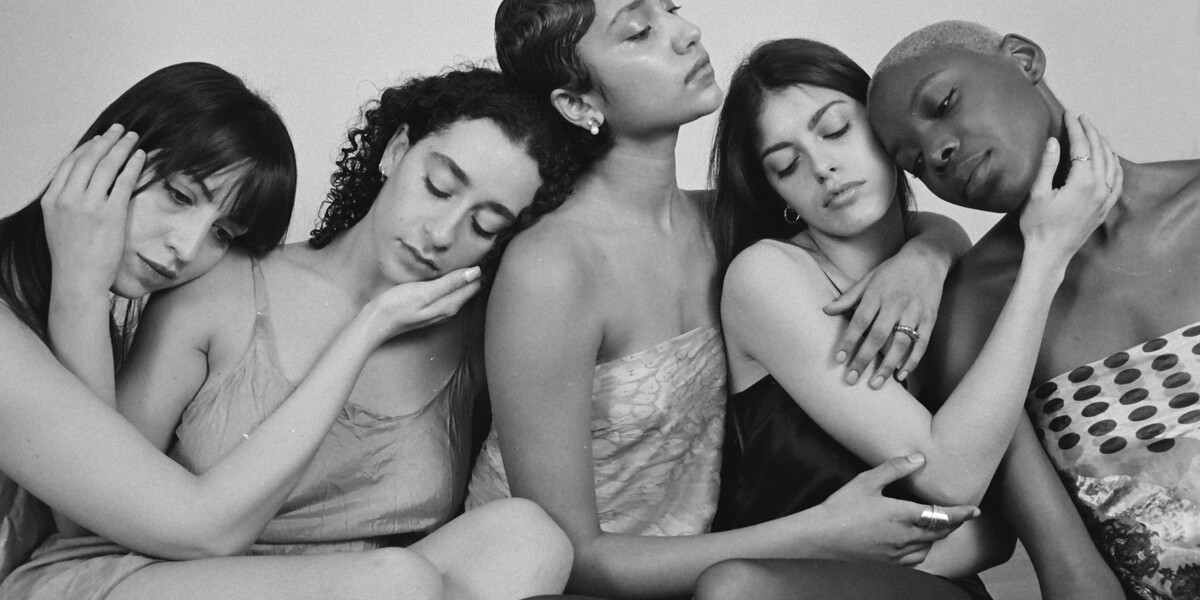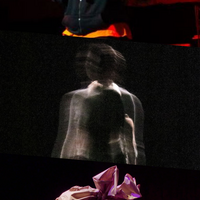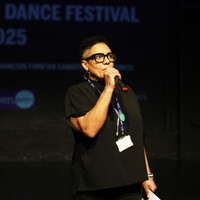Mon 30 May: Payal Ramchandani/Elettra Giunta/Follow Through Collective

News Story
Payal Ramchandani Just Enough Madness
Elettra Giunta To Hold My Love
Follow Through Collective Being at Hand
Remoteness, and the potential for life’s unfortunate rhythms to diminish our spiritual agency are themes that resonate throughout Payal Ramchandani’s Just Enough Madness. In this work, a woman dressed in a sari is illuminated by beams of gentle light that try to pull her beyond the dramatic thoughts and gestures that repeatedly loop throughout her blackened world. The conflicting experiences of gendered, cultural and psychological trauma are powerfully evoked in this narrative, which often pulls its character in contradictory societal, spiritual and theatrical directions.
The feeling that emotions can be heightened through their connection with the energy of other things pulsates from the stage in Elettra Giunta’s To Hold My Love. Five bodies dressed in pastel gowns are guided by the calm electronic rhythms that drift through their surroundings. Moved by the presence of immaterial forces, those who have the courage to dance alone quickly attract the attention of the pack. Here, the collective flexing of bicep muscles becomes a powerful symbol that supports the group to wrestle with and hold each other’s more than human desires. By conceptually recontextualising this historically masculine pose, To Hold My Love alters gendered binaries, providing sexual identity a stage on which to grow.
In the opening scene of Follow Through Collective’s Being At Hand, the audience is asked to sing a basic melody out loud. A looped recording of this chorus is fed into a computer by the work’s conductor, who starts to build a new world using bodies of sound. "Do you? Should I? Shall we?" the performers ask, artfully distributing our attention across the stage. The sound of the conductor slapping their own hand across their skin is an action that is quickly borrowed by another performer. Gliding forward she/ they/ them tap their hand on somebody else’s shoulder while another one darts forward and high fives somebody in the crowd. Being At Hand is 20 joyous minutes of synchronised engagement with free-forming, energetic weavings of sound, movement and interactive touch that courageously explodes the boundaries between audience and performer.
Sarah- Mace Dennis
Payal Ramchandani’s Just Enough Madness is a Resolution outlier, so clearly classical in style and aesthetic. In sari, ankle bells, makeup and jewellery, Ramchandani performs traditional Indian kuchipudi: highly stylised expressions and gestures, footwork tied to the music’s rhythmic complexity. She seems to portray several characters, each narrated by a voiceover, each with her own suffering: a woman whose fingers contour a lost child once within her; another whose hands slap her own face; another possessed by demons. Ramchandani is a committed, convincing dancer, but there’s a lot here for an uninitiated audience to take on board; less might have been more.
Where Ramchandani incorporates the iconic into the personal, Elettra Giunta’s To Hold My Love goes the other way, its five womxn (I follow their spelling) coming to seem like multiple incarnations of the divine feminine. To music that keeps swelling like the slow waves of a rising tide, the womxn establish their presence in solos that range from self-caressing to splay-limbed twists, wild-haired spirals and heroic, strong-armed poses. Yet they’re never really separate: actions seem to seep between them, and everything arises from a matrix of communion: sensual, whole-body embraces, plant-like intertwinings, cushioned bodies supporting each other. Soft, supple strong, sensual (the s-words keep on coming), it’s their portrait of sisterhood.
Audience interaction is always risky: who has power, what is consent, are choices free? Still, danger zones are interesting, and dance artists do keep going there. Being at Hand begins with musician Andy Trewren conducting us to sing a few simple notes, that records and incorporates into his soundtrack. So far, so safe. The four dancers play games of high-five (it’s up to the responder to make contact, note), with each other then with audience members. There are other contact games between them, with a little light audience touch. At the end they wonder if people might join them on stage for a bop; quite a few very happily do. It’s a bit hippy-wholesome, but also very sweet. Was the critic enticed across the fourth wall into a space of communal togetherness? Haha, no chance.
Sanjoy Roy


